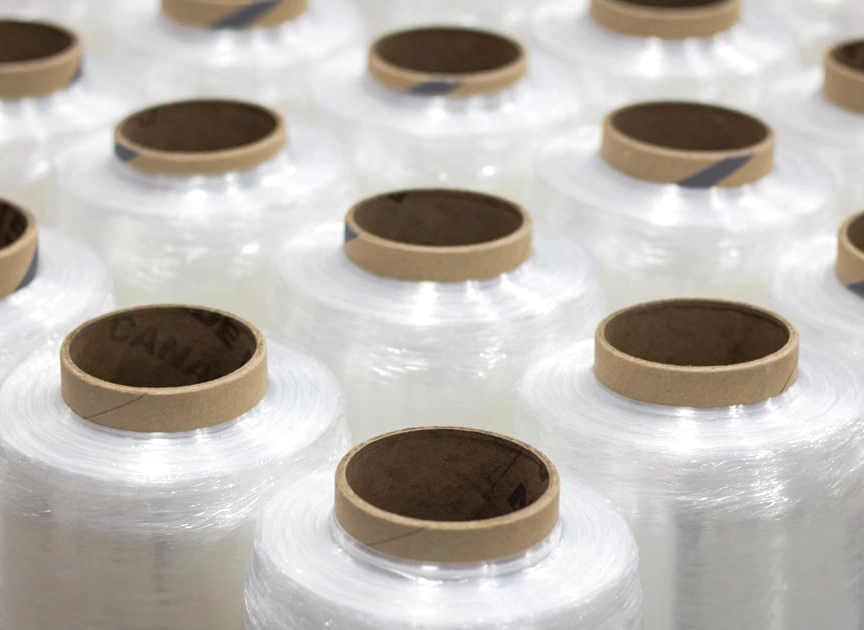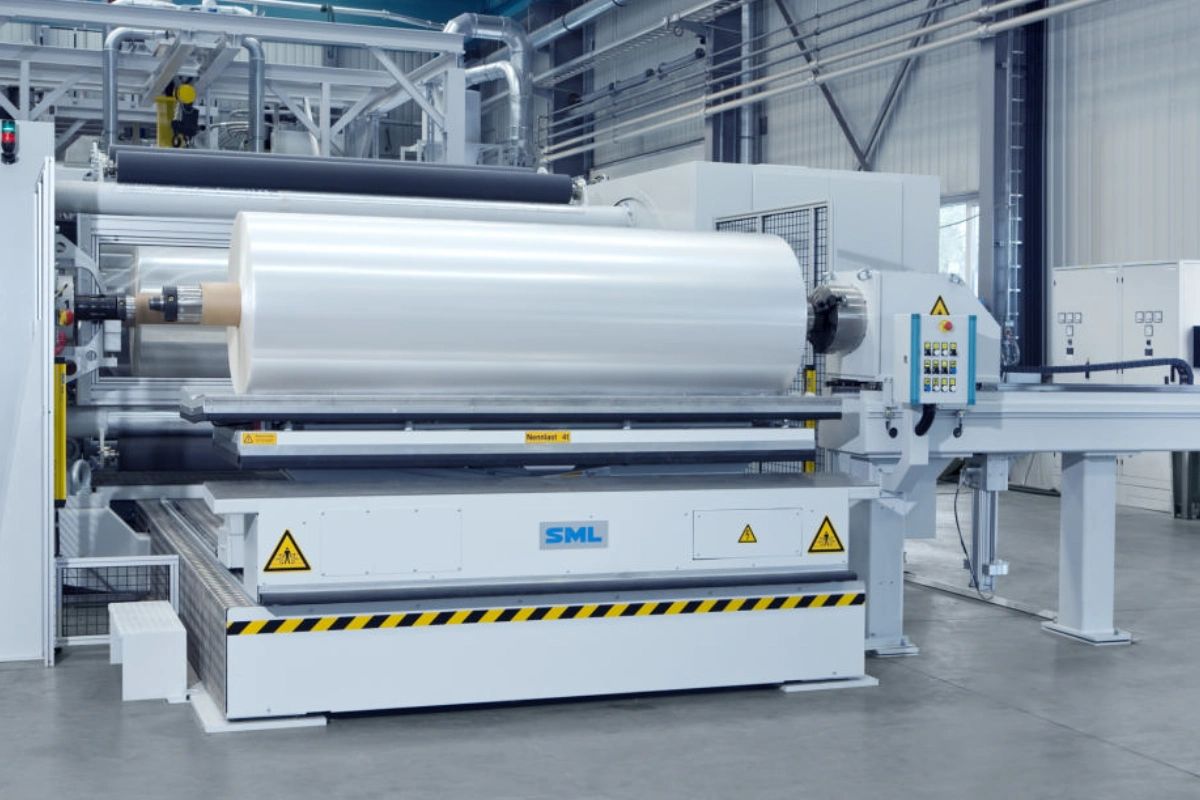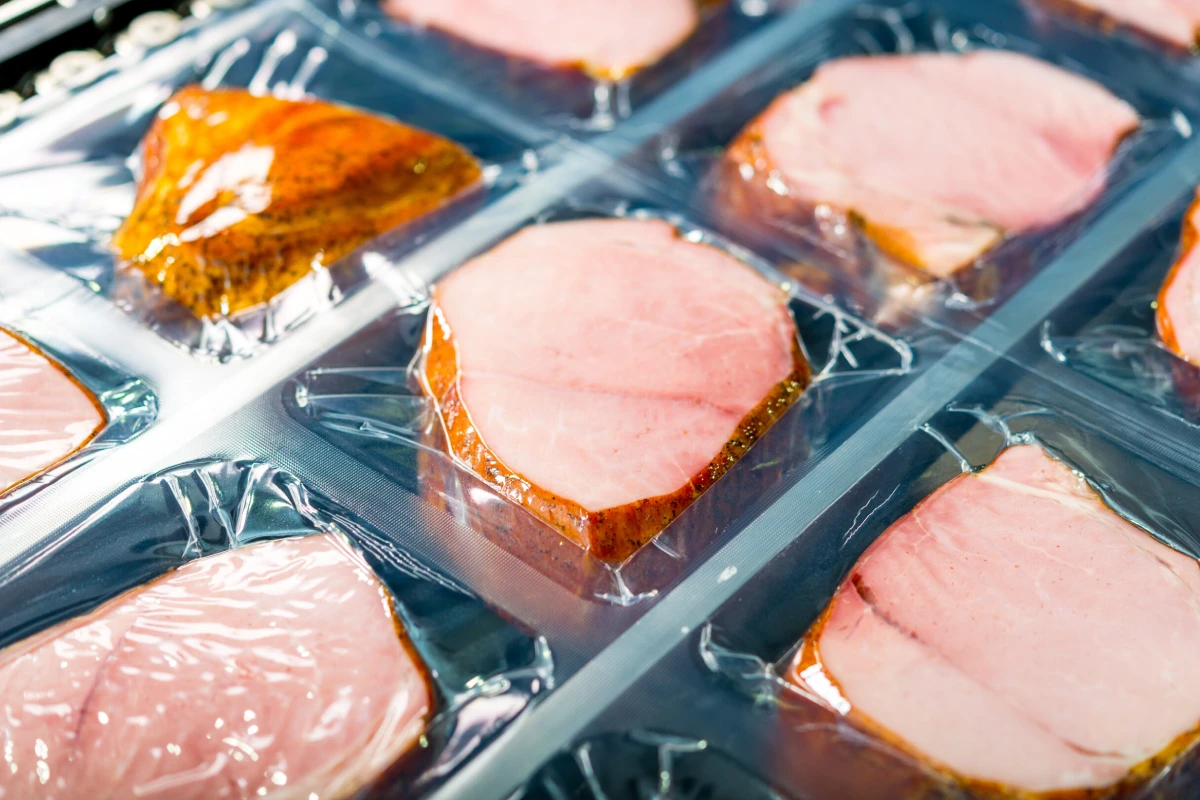Stretch film is one of the most widely used plastic products in various industries, especially for packaging and protecting goods during transportation. With its high flexibility, excellent adhesion, and optimal tensile strength, stretch film has become a go-to solution for safe, cost-effective packaging.
In this article, we’ll take you through the production process of stretch film at Raga Parsian, from selecting raw materials to the final product. If you’re curious about how high-quality stretch film is made from materials like Linear Low-Density Polyethylene (LLDPE) and what steps ensure top-tier performance, keep reading!
For more information or to purchase stretch film, feel free to get in touch with our experts at Raga Parsian for free consultations.
What is Stretch Film?
As mentioned, stretch film is a type of plastic film used to cover and protect products. Known for its incredible stretchability, it allows manufacturers to create tight, secure packaging that helps protect goods during storage and transport.
Raw Materials Used in Stretch Film Production
The main raw material for producing stretch film is Polyethylene (PE). This plastic material not only offers high resistance but also helps in producing films with excellent stretchability.
Polyethylene (PE) – The Key Ingredient
Polyethylene is one of the most common plastics used in stretch film production due to its unique properties. It’s made from ethylene monomer and comes in two main types:
- Low-Density Polyethylene (LDPE)
- High-Density Polyethylene (HDPE)
Polyethylene is favored for its excellent mechanical properties, high flexibility, stretch resistance, and waterproof nature, making it the ideal material for stretch film production. It allows the creation of thin films that still possess great stretch capabilities and durability.
On top of that, polyethylene is cost-effective, easy to process, and recyclable—making it a sustainable choice for businesses focused on reducing environmental impact.
Additives and Chemicals in Stretch Film Production
Along with polyethylene, various additives and chemicals are used in the production process. These can improve UV resistance, increase transparency, or enhance other characteristics, ensuring the film meets the required specifications for different applications.
The Stretch Film Production Process at Raga Parsian
Now that we know about the raw materials, let’s walk through the step-by-step process of how stretch film is made at Raga Parsian. Each stage plays a crucial role in determining the quality and performance of the final product.
Step 1: Preparing Raw Materials
The first step in production is preparing the raw materials, including processing polyethylene and various additives. The plastic material is typically in the form of plastic granules before being fed into the production machines.
Step 2: The Extrusion Process
Next, the granules are melted and fed into an extruder, a device that uses high pressure and temperature to melt the plastic and form it into a thin layer. The extruder converts the plastic from solid granules into a thin film by passing it through a narrow die.
Step 3: Stretching and Thin Film Production
Stretching the film is one of the most critical stages. The thin layer of plastic is stretched to reduce thickness and increase its stretchability. This process enhances the mechanical properties of the film, making it resistant to tearing. However, too much stretching can cause the film to break, so careful attention is given to this stage.
Step 4: Cooling
After stretching, the film needs to cool quickly to retain its shape and prevent deformation. It is placed on a cooling system, typically using cold air or water, to bring it to room temperature and solidify its final form.
Step 5: Quality Check
At this point, the quality of the stretch film is inspected. Key qualities checked include tensile strength, thickness uniformity, clarity, and overall durability. If the film meets quality standards, it’s ready for packaging; if not, adjustments are made.
Step 6: Rolling and Packaging
The stretch film is then wound into rolls, which are packaged and prepared for distribution. These rolls come in various sizes depending on their intended use, making them versatile for different industries.

Quality and Characteristics of Raga’s Stretch Film
For stretch film to be effective across industries, it must meet specific characteristics. The primary feature is its tensile strength, which ensures that products are securely wrapped and protected during transport. Additionally, film clarity is especially important for packaging industries, allowing customers to clearly see the contents. The film must also be washable to withstand various conditions.
Challenges in Stretch Film Production
Despite its benefits, producing stretch film comes with its own set of challenges:
1. Thickness Control
Maintaining consistent thickness is one of the biggest challenges in production. If the film is unevenly thick, it may lack the necessary resistance to stretching, resulting in lower quality.
2. Impact of Temperature and Speed
The temperature and speed of the production equipment significantly impact film quality. High temperatures can soften the plastic too much, reducing film quality, while excessive speed can lead to uneven thickness.
3. Material Quality
Choosing high-quality raw materials is essential for producing durable, effective stretch film. Low-quality materials can affect both the stretchability and the manufacturing process, compromising the final product.
Applications of Stretch Film
Stretch film is widely used for:
- Packaging goods
- Protecting products from environmental damage
- Transporting industrial parts
What Raw Materials Are Used in Stretch Film Production?
The primary material for making stretch film is Polyethylene (PE), which provides the necessary stretch and durability.
Is Stretch Film Recyclable?
Yes, stretch film is typically recyclable and can be reused in the production cycle, promoting sustainability.
Why is Stretching Important?
Stretching increases the film’s resistance to tearing and improves its packaging strength, which is key to creating secure, safe packaging.
What Issues Arise in Stretch Film Production?
Common issues include thickness control, the impact of temperature and speed on quality, and the importance of high-quality raw materials for a successful production process.
Conclusion
At Raga Parsian, we ensure that every step of our stretch film production process follows strict industry standards and quality control procedures. From carefully selecting premium raw materials to utilizing advanced production techniques, we guarantee stretch films that are durable, flexible, and offer excellent adhesion. Whether for food packaging, industrial goods, or transportation, our stretch film ensures safe, secure, and reliable packaging.



